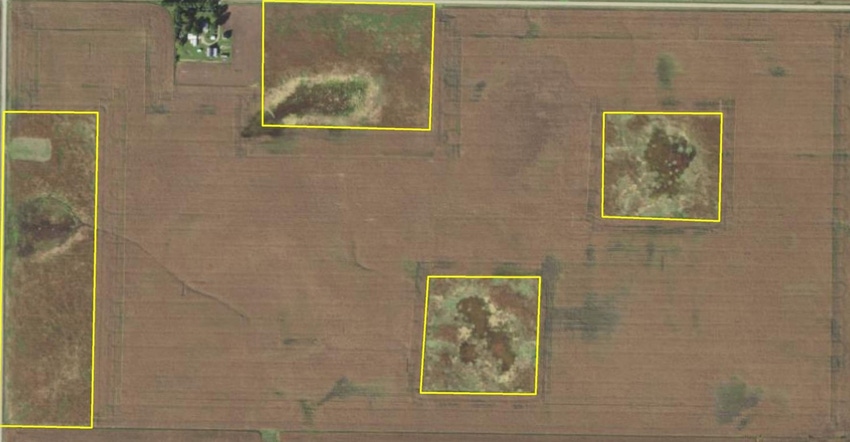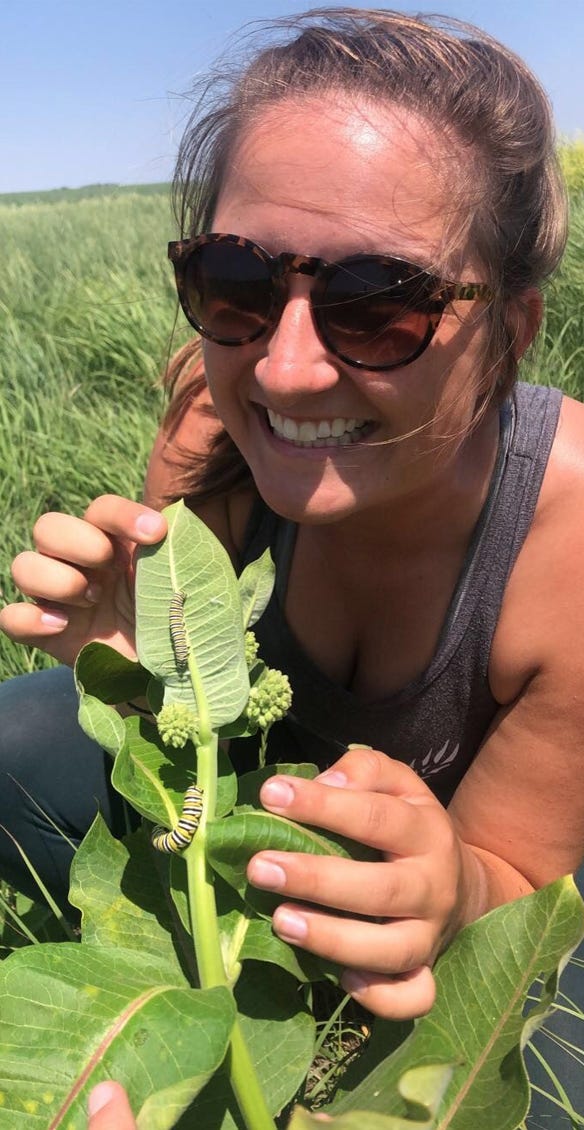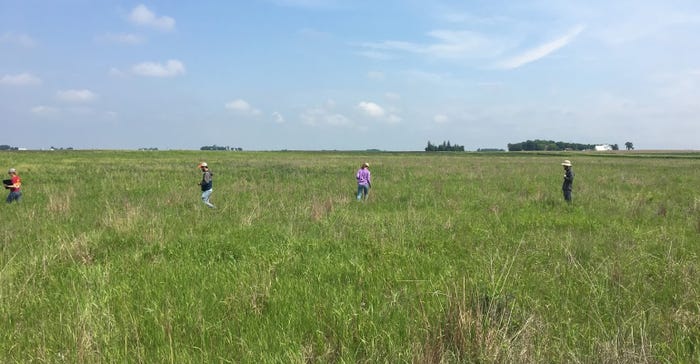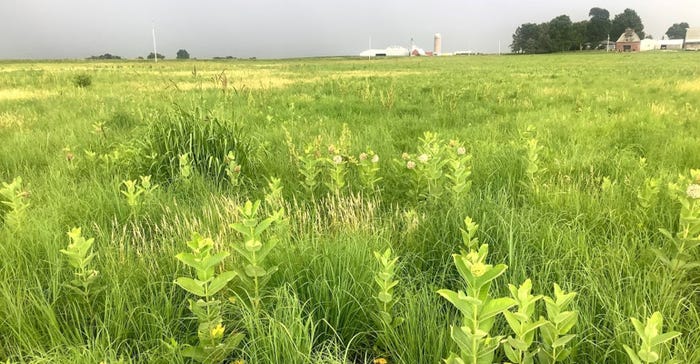November 14, 2022

Most Iowans understand that the state’s annual population of monarch butterflies has dramatically decreased over the past few decades. The root cause of this decline is attributed to the loss of millions of milkweed plants — the only plant these butterflies lay eggs on, and the initial food source for the larvae. Finding places to restore milkweeds and other flowering native plants in Iowa is critical to seeing the population trend reversed.
To address this challenge, the Iowa Monarch Conservation Strategy seeks to add 160 million new stems of milkweed to Iowa’s landscape by the year 2038. However, a very real opportunity exists to more than double that goal, offering even greater benefits to farms such as decreased costs, more pollinators and additional environmental benefits in one swoop — a win-win-win scenario by any standard.
This potential is borne out by the results of a recently finished project at Iowa State University, for which armies of student interns were dispatched to count milkweed stems in a few small patches of grasses and wildflowers in the middle of crop fields south of Ogden, Iowa. The study areas were marginal acres converted from unprofitable corn and soybeans into native perennial vegetation. In assessing the input costs and yields from these areas, it is evident that the farmers can make more money by not farming them rather than trying to milk a crop in the rare favorable years.

The small areas in this study were wet spots created by glaciers 12,000 or so years ago. But on other farms, underproducing zones may be hillslopes, floodplains, old building lots, compacted areas etc.
12% of cropland could be underproducing, unprofitable
Research at ISU has estimated how prevalent these unprofitable areas are. A study published in 2018 estimated that 12% of Iowa’s corn and soybean acres annually lost over $40 per acre and some 40 pounds of nitrogen per acre, subject to loss into nearby waterways. Considering Iowa’s 23 million acres of corn and soybeans, this works out to some 2.7 million acres losing money on the scale of $108 million every year.
The recent study in Boone County investigated 208 of those 2.7 million acres of unprofitable cropland that had been taken out of crop cultivation and enrolled in the Conservation Reserve Program. This study area offers a lens to the future, where such a practice may be more mainstream. Two core research questions were: What would happen once we stop farming profit-loss areas? What benefits accrue to monarchs?

During the first two summers of the pandemic, our interns sought to answer these questions by counting milkweeds and monarchs in the 13 parcels within five larger crop fields. With the gracious permission of the farmers and landowners, the crews traipsed through growing corn and beans and dodged battalions of mosquitoes to enumerate and inspect 3,969 stems of milkweed following standardized protocols. Analyzing the collected data, we were able to normalize them to an estimated typical value of 154 milkweed stems per acre (plus or minus 31 stems).
There was a wide variability in this density estimate, because milkweed stems are patchy in distribution. You can walk a hundred yards without seeing one, and then find yourself in a forest of them. This makes extrapolating a density estimate tricky, but our estimate of 154 stems per acre does align with Iowa’s planning estimates and numbers used in international planning scenarios.
What if we converted 2.7 million acres?
Applying the 154 stems of milkweed per acre to the 2.7 million acres of land that annually lose $40 or more per acre when they’re cultivated for corn and soybeans, we arrive at 415.8 million new stems of milkweed. This is some two-and-a-half times the total number of milkweed stems sought to be added in the entire state in the strategy.

That’s a win-win-win if there’s ever been one — as a practice which helps farmers and landowners become more profitable and resilient, while also improving environmental performance of crop fields by taking hot spots of nutrient loss or greenhouse gas exchange out of cultivation and making them monarch and milkweed factories.
The potential magnitude of this opportunity is the reason that Conservation Learning Group is working to get the word out through field days, publications, instructional tools and Extension outreach activities. Working together, farmers, conservationists, agencies and agricultural professionals can help make Iowa farms more profitable — and grow a few hundred million milkweeds to feed the monarchs while we’re at it.
To learn more about Iowa’s Monarch Conservation Strategy, visit monarch.ent.iastate.edu/iowa-monarch-conservation-strategy.
Janke is an associate professor and Extension wildlife specialist with the Department of Natural Resource Ecology and Management at Iowa State University.
You May Also Like




